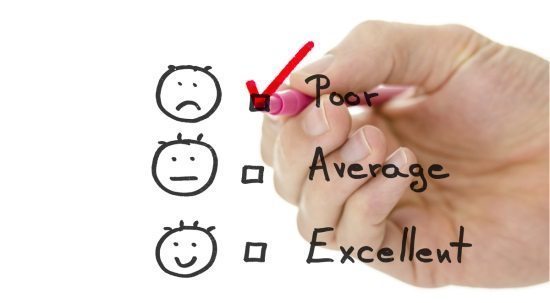It has been over two decades since I started my first company at age 25.
My early years in business were emotionally draining. I wrestled with every decision, second guessing whether it was the right move. I had personified my company; if the business failed then I was a failure. Unfortunately, I was more motivated by the fear of failure than a desire to succeed.
Five years later I decided to close the business in order to relocate. As I was driving to California I started to think about the amount of time I spent worrying about the possibility of a business failure. Yet in the end, I chose to shut it down. How ironic I thought. This prompted me to rewrite my definition for success and failure—to succeed was to try and to fail was to give into fear and not try. This simple change in mindset did improve my well-being. I was no longer emotionally attached to the business outcome. However, the “go for it” attitude did not support logical decision making.
Twenty years later, at the height of my consulting career the recession hit. During a strategic meeting with one of my clients I suggested they downsize or consider closing the doors. The company had been in financial trouble prior to the recession and I did not believe their ailing business model could withstand another hit. Not wanting to fail, they invested their life savings into the company only to lose everything two years later. Before the recession was over, I watched many businesses perish. This caused me to question my financial security and happiness. I revisited an old question, “What is the definition of success and failure?”
In my dismay, I made a bold decision. I would chose a balanced lifestyle, working less and pursuing my other love—rock climbing. For many years now I have equally divided my time between my business and climbing. I have gained a new perspective about life, risk, success and failure. I now apply the lessons learned during climbing to my business strategies.
Sometimes it Takes Repeated Failures to Learn
In my previous article I wrote about climb called Illusion Dweller, located in Joshua Tree Park. I had fallen twenty feet when attempting the climb. In the article I compared the failed attempt of the climb with my client’s forced business closure. This last weekend I attempted the climb again. At this point in the story you would expect a declaration of victory with an epitome about the need to fail before you finally succeed. However, that is not what happened. This time I failed miserably, worse than my first attempt. Once again I fell twenty feet, in the same place as last time. Unexpectedly, I then fell five more times at the roof of the climb. An area I had climbed through successfully several times before.
I had determined the fall had been due to physical exhaustion. I now realize my approach was technically incorrect. My hand placed into a crack in the rock appeared solid. However, the next move was a high step, which pushes the hip away from the rock. With the added force of gravity from my extended hip, my ability to make the hard move was fully dependent on physical strength. Realizing I could not approach the move in the same manner as others who had larger hands, I changed my strategy. I placed my other hand near the first to further secure my grip during the move. This reduced the amount of physical energy required. In climbing or business investing more energy (or money) will not necessarily guarantee results. I was reminded of this again during the next section of the climb.
When attempting the roof move my mind became fixated on the wrong foothold. My myopic vision prevented me from seeing the other foothold six inches to the left. The additional distance would have evenly distributed my weight, making the move less strenuous. Rather than analyzing the situation, I stubbornly repeated the same mistake five times. What is the definition of insanity—doing the same thing and expecting different results! I finally grew tired of banging into the rock and decided to stop and think it through. Once I opened my mind to a change in strategy, the foothold that escaped my vision prior become obvious. Although I was a little bruised, I was not injured. In fact, I was still capable of climbing a few more routes before sunset.
The lessons learned from this repeat failure can be directly applied to business strategy. I have seen companies act in a similar manner—investing additional funds in an already failed venture hoping to pull through the move. When the company finally decides to change strategies, they have depleted valuable funds. Success is now limited by the available resources. This does not work in business or climbing.
Defining Safe Ways to Fail
Falling is an inherent part of climbing. Eventually you will be able to climb at a certain grade without falling. However, if you want to climb at a higher grade, you will be exposed to new situations requiring additional skill. You will take several falls before you master the technical moves at that grade. Therefore, to succeed long-term as a climber you must understand how to mitigate the risk of injury when falling.
Risk is not calculated by the distance a climber falls, as much as what they may hit on the way down. If a climber does not place adequate protection at the start of the climb they take a chance of falling to ground level. This is referred to as “decking. Obviously, the impact of landing on the ground almost guarantees injury. In the same manner business decisions involve risk. A business strategy does not always provide the desired results. To keep from losing everything, you must mitigate the risk. How far can you fall without getting hurt?
Failure is an inherent part of business growth. To properly mitigate risk, you must understand where to draw the line. For example, using operating cash flow for business investments runs the risk of “decking”. Before making any financial moves you must first determine the amount of cash that is “safe” to invest. This can be done through a cash flow analysis. With that said, your analysis should not include any questionable sales; only those from on-going projects, signed proposals or projects with deposits should be considered. Additionally, when considering expenses you must include both known and unexpected cost. Review historical data to gain an understanding of your monthly expense fluctuations. By applying these two moves to your cash flow analysis, you will be able to calculate a realistic risk assessment. If the business decision becomes your “Illusion Dweller” you will survive even if you fail.
Another potential decking situation in business can be attributed to what is called a concentration of receivables. This occurs when a few clients comprise a large portion of total sales. The loss of one client can put your company in a dangerous situation. To determine your level of risk, calculate the percentage of sales that can be attributed to the top three accounts. For companies that engage in large projects having a concentration in receivables may be unavoidable. In this case, you must mitigate risk by having cash reserves to cover the time required to obtain another client. This time frame can be determined by studying historical sales. What was the average period of time from the initial contract to engagement? This will give you an indication of the amount of cash reserves required.
In climbing I have learned how to fail and still live. On a similar note, after two decades functioning as a business consultant, I understand how to safely fail in business. To revisit an old question, “What is the definition of success and failure?” To succeed is to go forth with intelligence and awareness. To fail is to go forth without properly assessing the inherent risk. When making business decisions avoid the ultimate failure of bankruptcy. Do not go forth if there is a potential of decking.
To learn more about Business Simply Put and receive a FREE coach note visit www.BusinessSimplyPut.com





